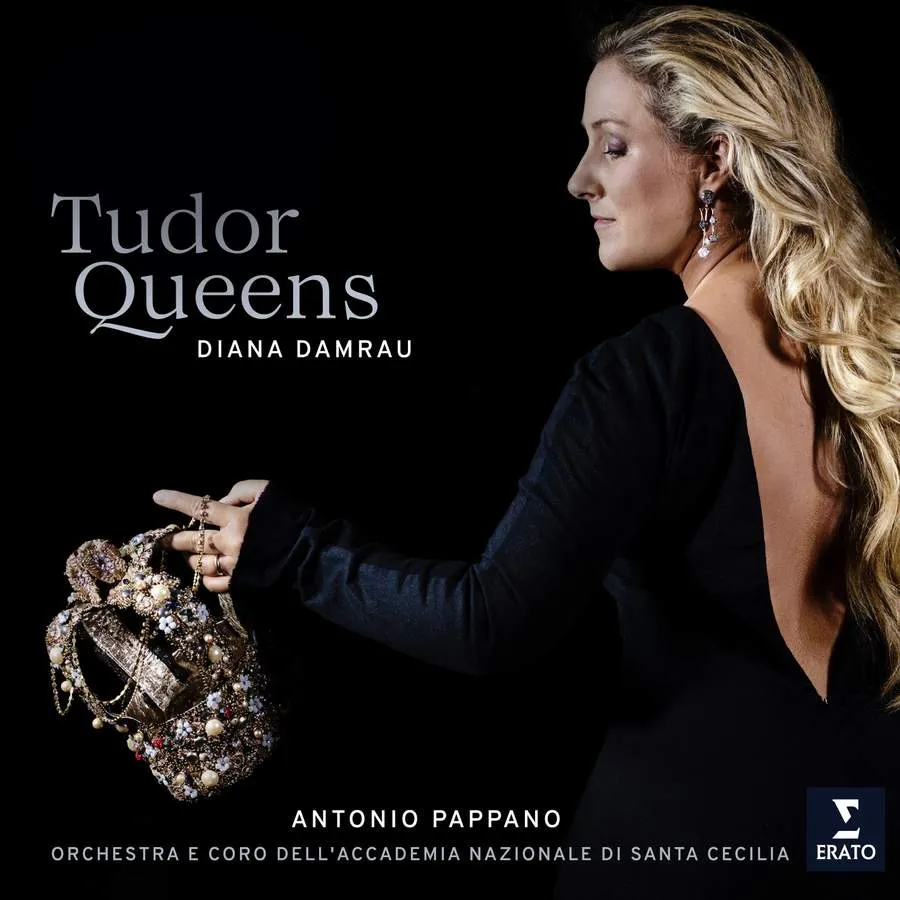
Donizetti Tudor Queens – Scenes from Anna Bolena, Maria Stuarda and Robert Devereux Diana Damrau (soprano), Irida Dradoti, Sara Rocchi (mezzo-soprano), Domenico Pellicola, Saverio Fiore (tenor), Andrii Ganchuk (baritone), Fabrizio Beggi (bass); Santa Cecilia Choir & Orchestra/Antonio Pappano Erato 9029528093 69:28 mins
There was an eccentric fashion at the turn of the 20th century for staging the best bits of several operas in a single evening. You might get half of La traviata plus Cavalleria rusticana, or La bohème with the mad scene from Lucia di Lammermoor thrown in. It was often dramatically nonsensical, but on this disc, three thematically-connected Donizettian dénouements (Anna Bolena, Maria Stuarda and Roberto Devereux) make for a compelling combination.
Donizetti is a composer about whom critics have been cutting over the years. Immensely successful in their day, his works suffered a backlash from the late 19th century onwards, coming to be regarded as little more than circus acts put on to flatter star singers. Though that reputation has been largely revised, only a very few operas from his vast output are regularly performed. But listening to the finales of these three in quick succession demonstrates not only the beauty of the music but a clear stylistic shift across the 1830s, from pure vocal decoration towards something harmonically and psychologically more complex.
The roles of Anna, Maria and Elisabetta make high technical demands on the singer, as well as calling for an exceptionally wide expressive range. Diana Damrau, luminous of voice, is surely the perfect exponent of this repertoire: adept at surmounting the music’s technical challenges in its dramatic moments, yet equally capable of exhibiting the tenderness for which these roles call. In the extract from Anna Bolena, she shifts seamlessly through a kaleidoscope of emotions: wistfulness, panic, luxuriant nostalgia (‘Al dolce guidami’), consoling prayer, a rising sense of horror and a final show of force (the cabaletta ‘Coppia iniqua’). It is a truly bravura performance.
The other two operas call for an even more intense mixture of tenderness and fortitude. Damrau is triumphant in the grand prayer scene from Maria Stuarda (‘Deh! Tu di un’umile preghiera’), effortlessly floating never-ending notes over the top of an ardently-sung chorus. She exudes a mixture of vulnerability and fearlessness as Maria faces her fate at the conclusion to that opera, the voice always malleable and graceful. She is positively terrifying in a bitter tirade (‘Tu, perversa’) from the end of Roberto Devereux.
Damrau’s animated performance is matched by that of the other principals, an impressive supporting cast drawn mainly from the young artists’ programme at the Rome Opera. (Tenor Domenico Pellicola stands out as a singer to watch.) Antonio Pappano coaxes the most delicate and refined of performances from the Orchestra and Chorus of the Accademia Nazionale di Santa Cecilia. The chorus ‘Chi può vederla’ that opens the disc is spine-tingling, here tender, there ominous, a host of tiny orchestral details gleaming through the texture. With exceptional sound quality, this is a disc that does not put a foot wrong and the lavish multi-lingual booklet with full libretto is a bonus. Simply ravishing.
Alexandra Wilson